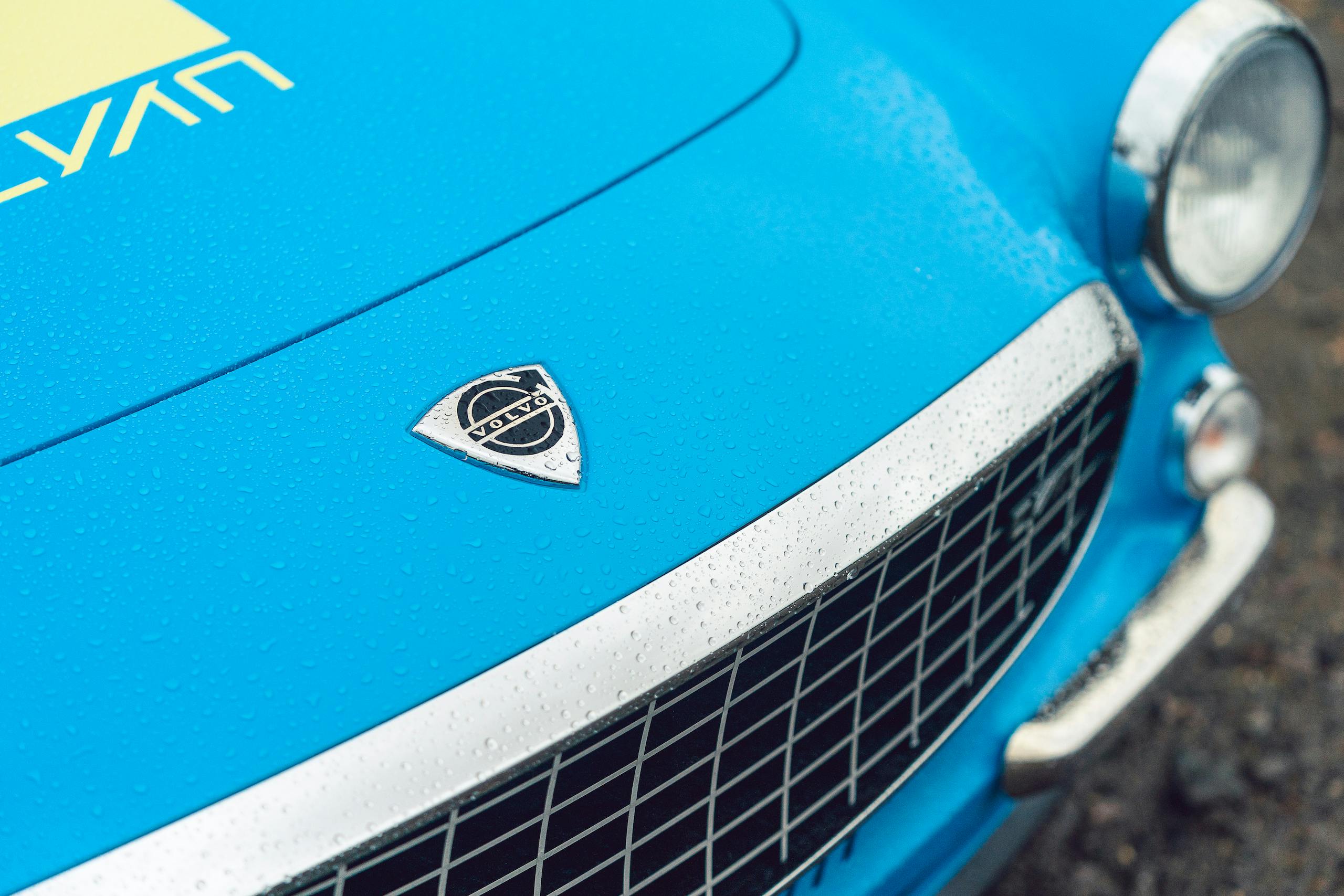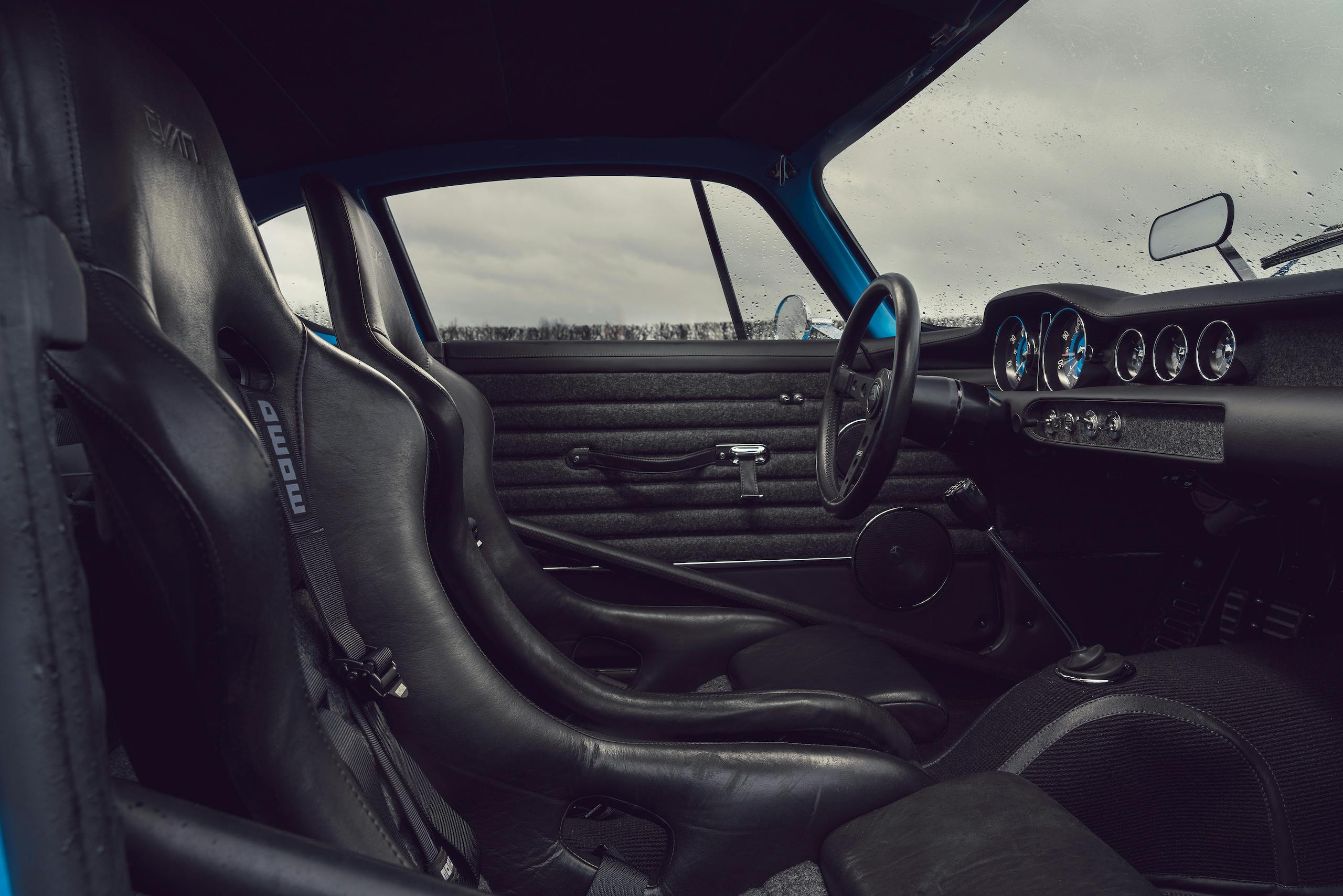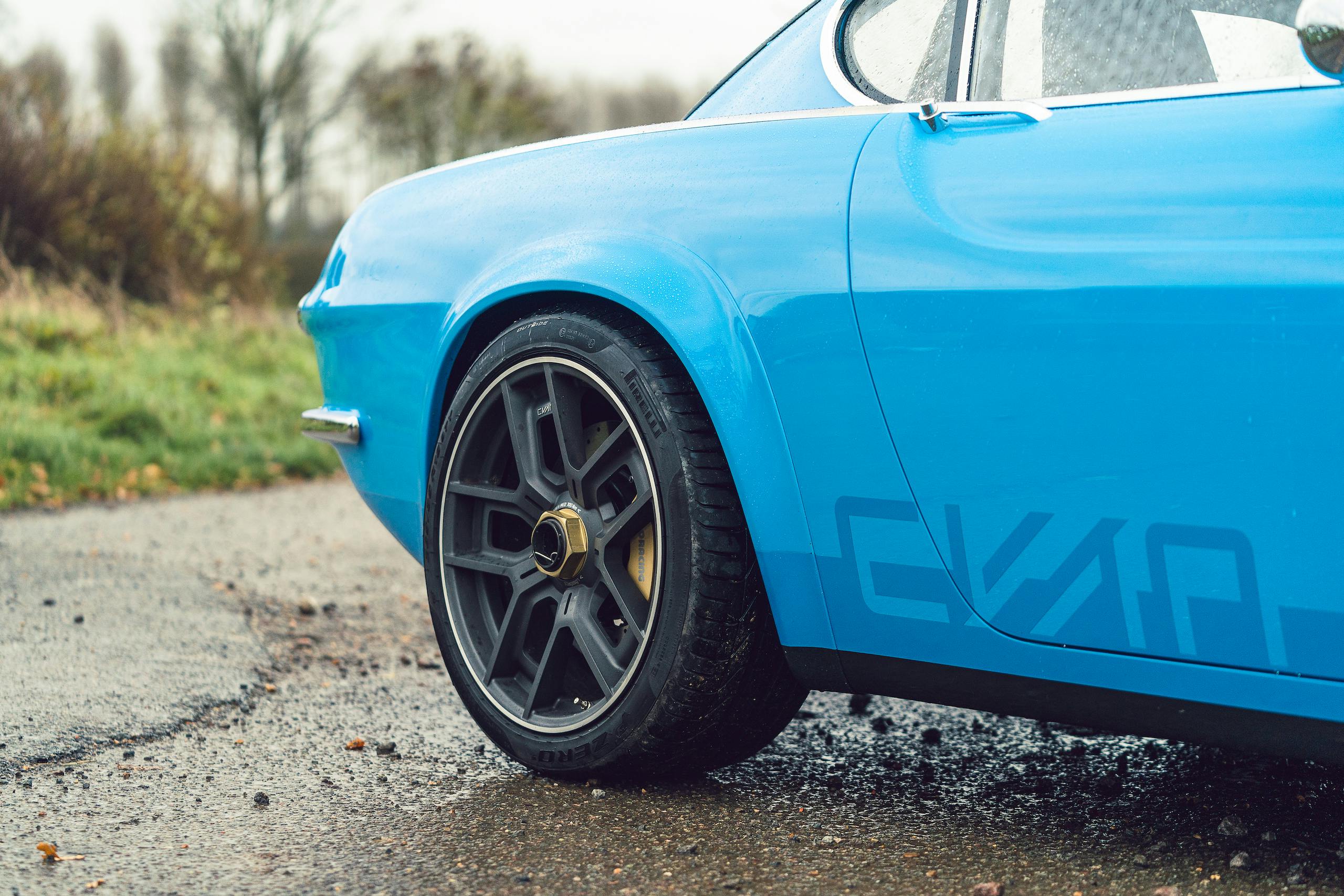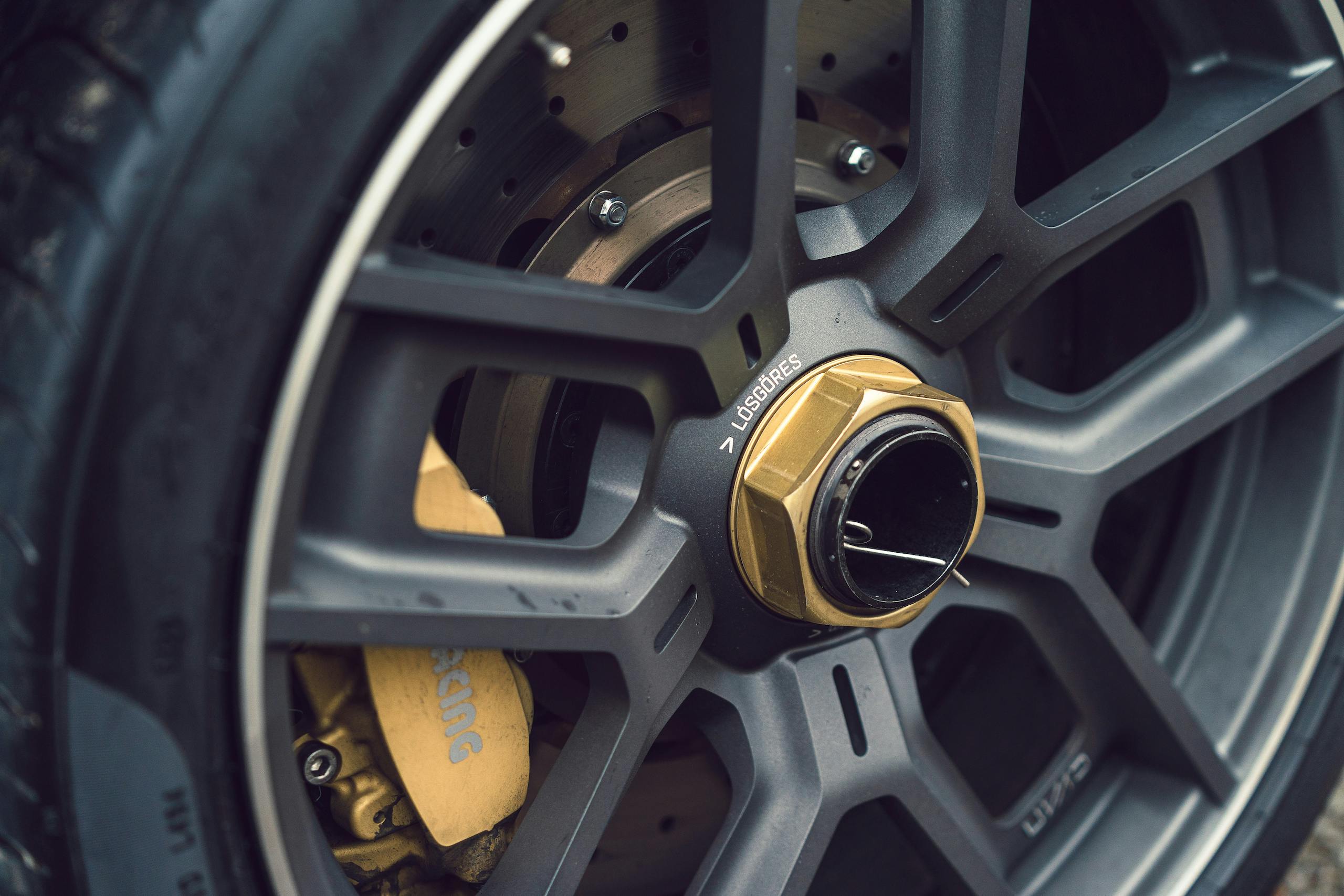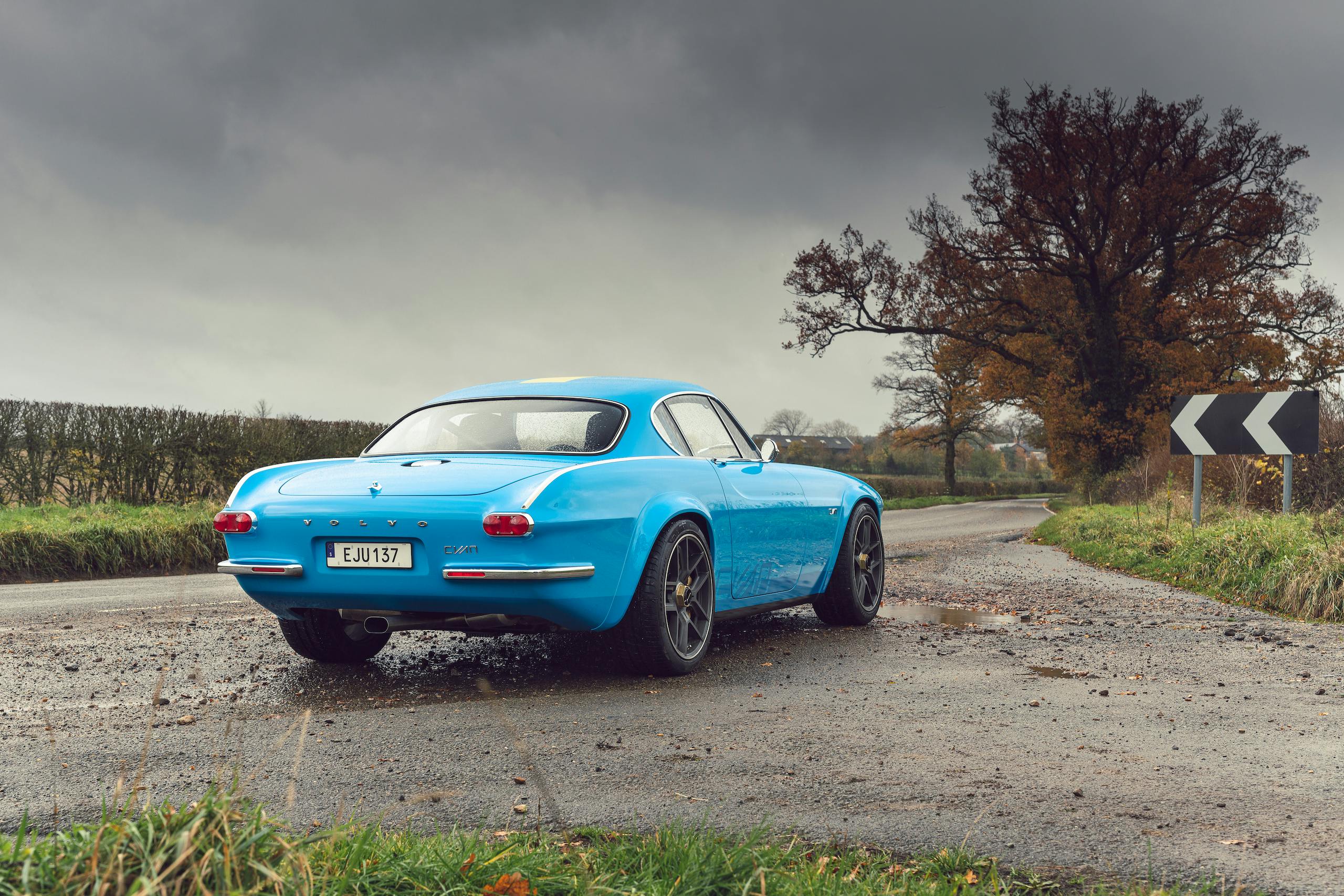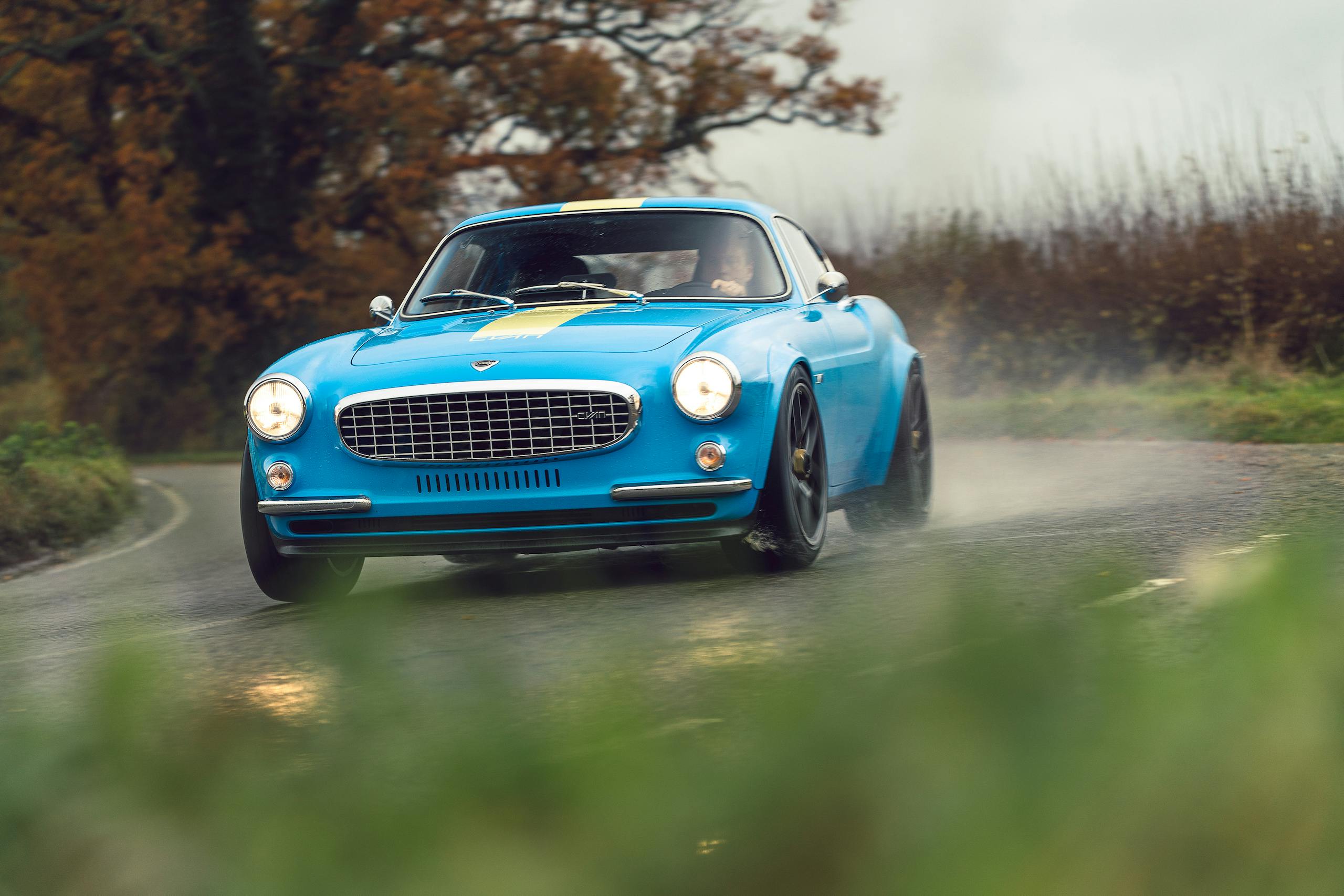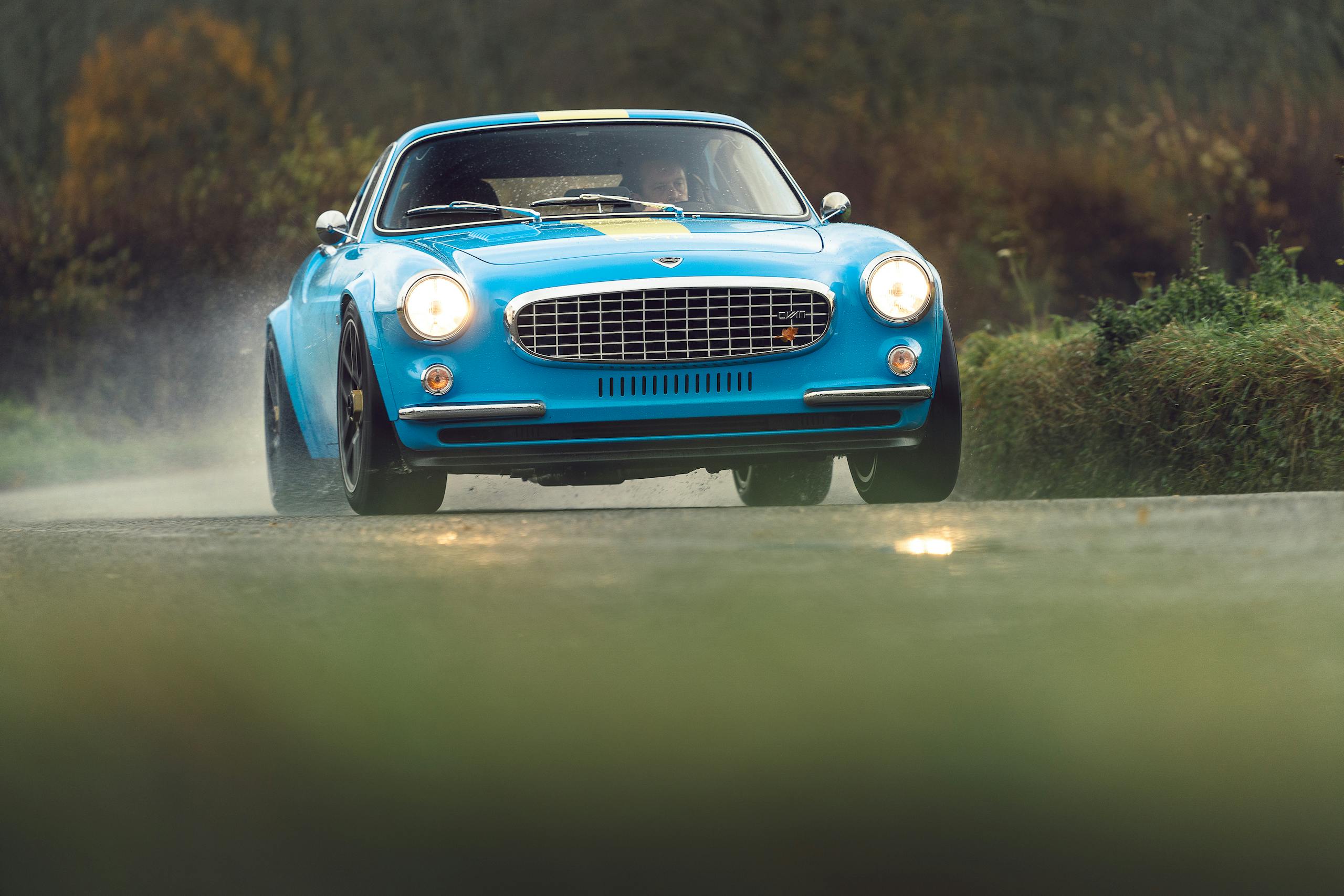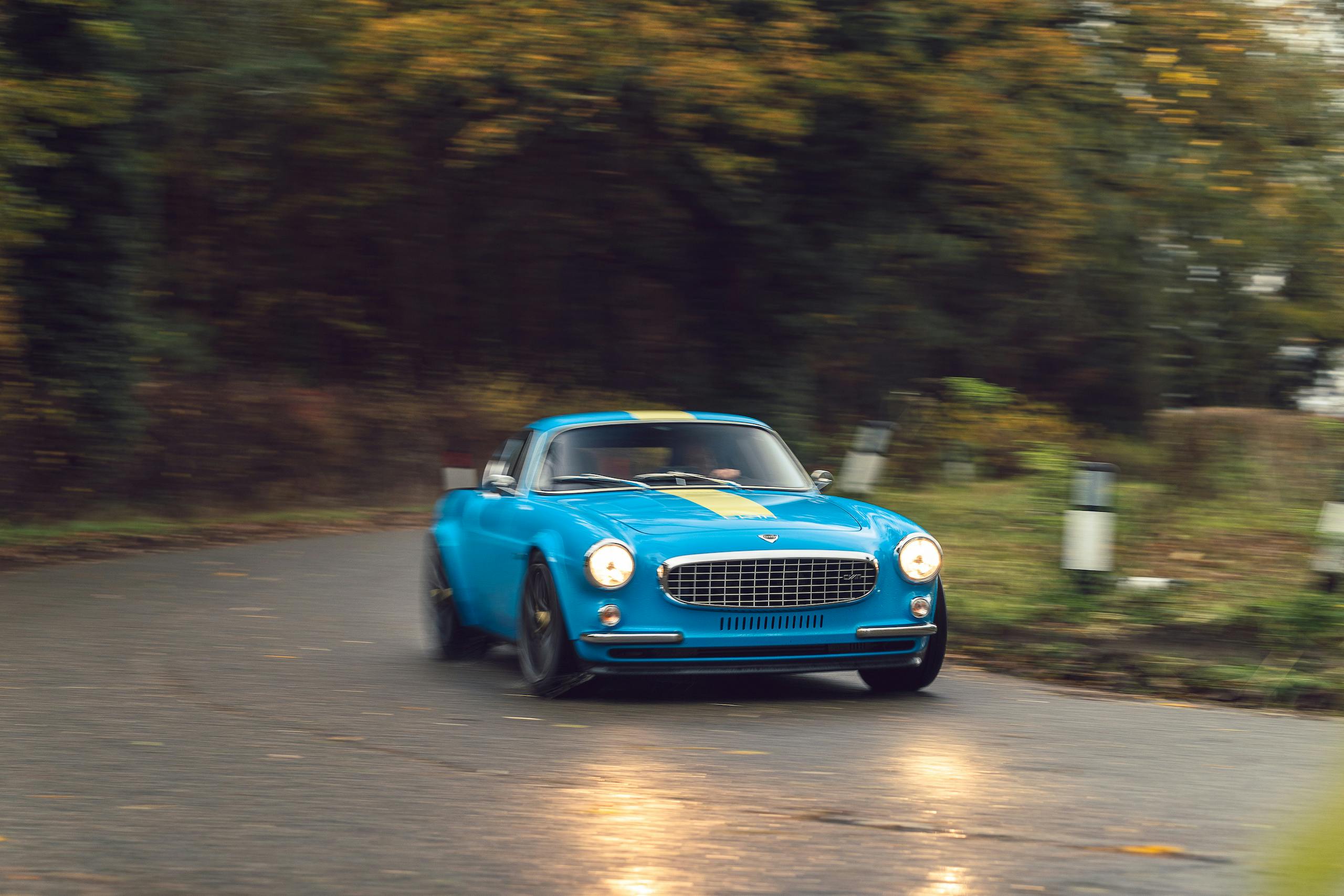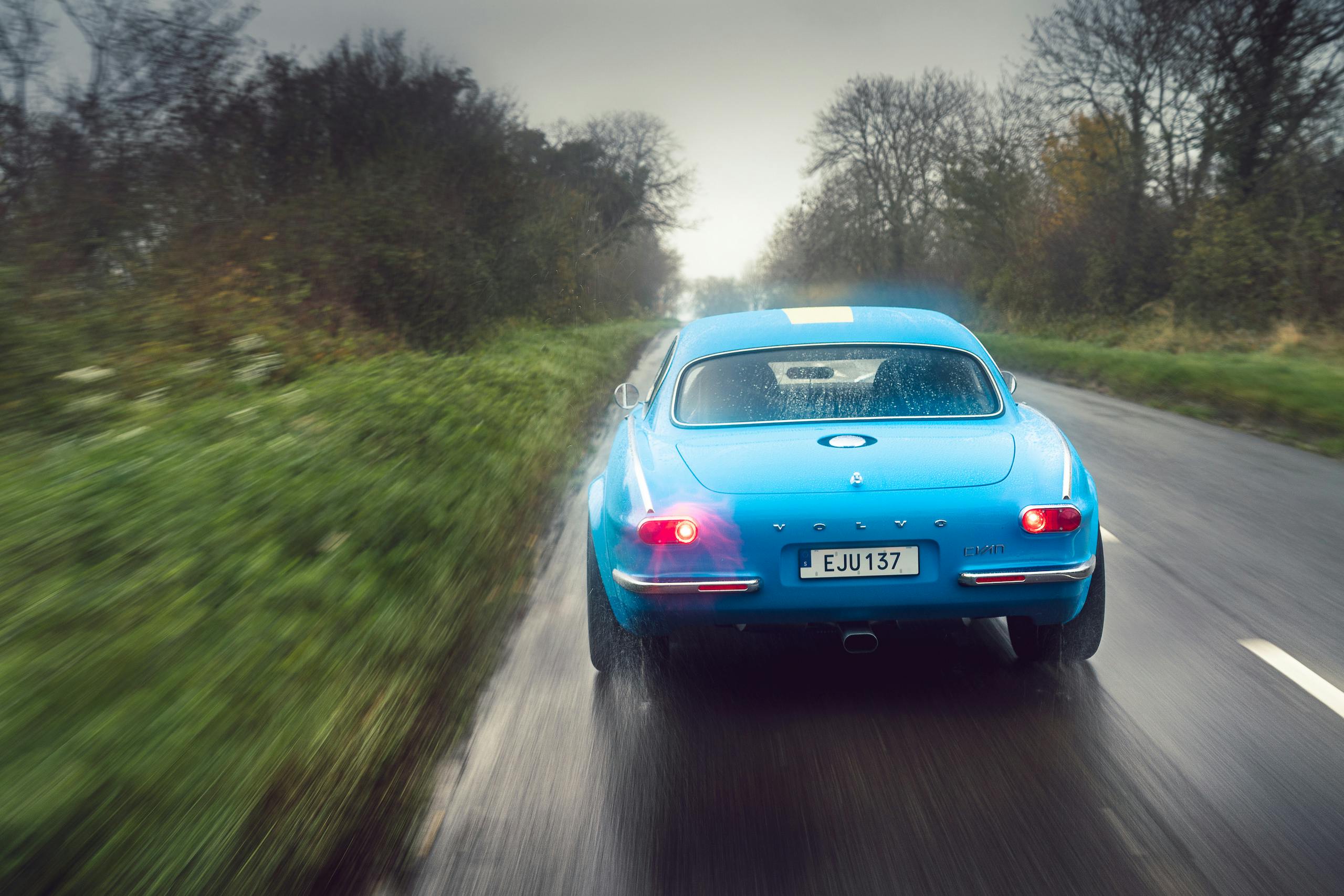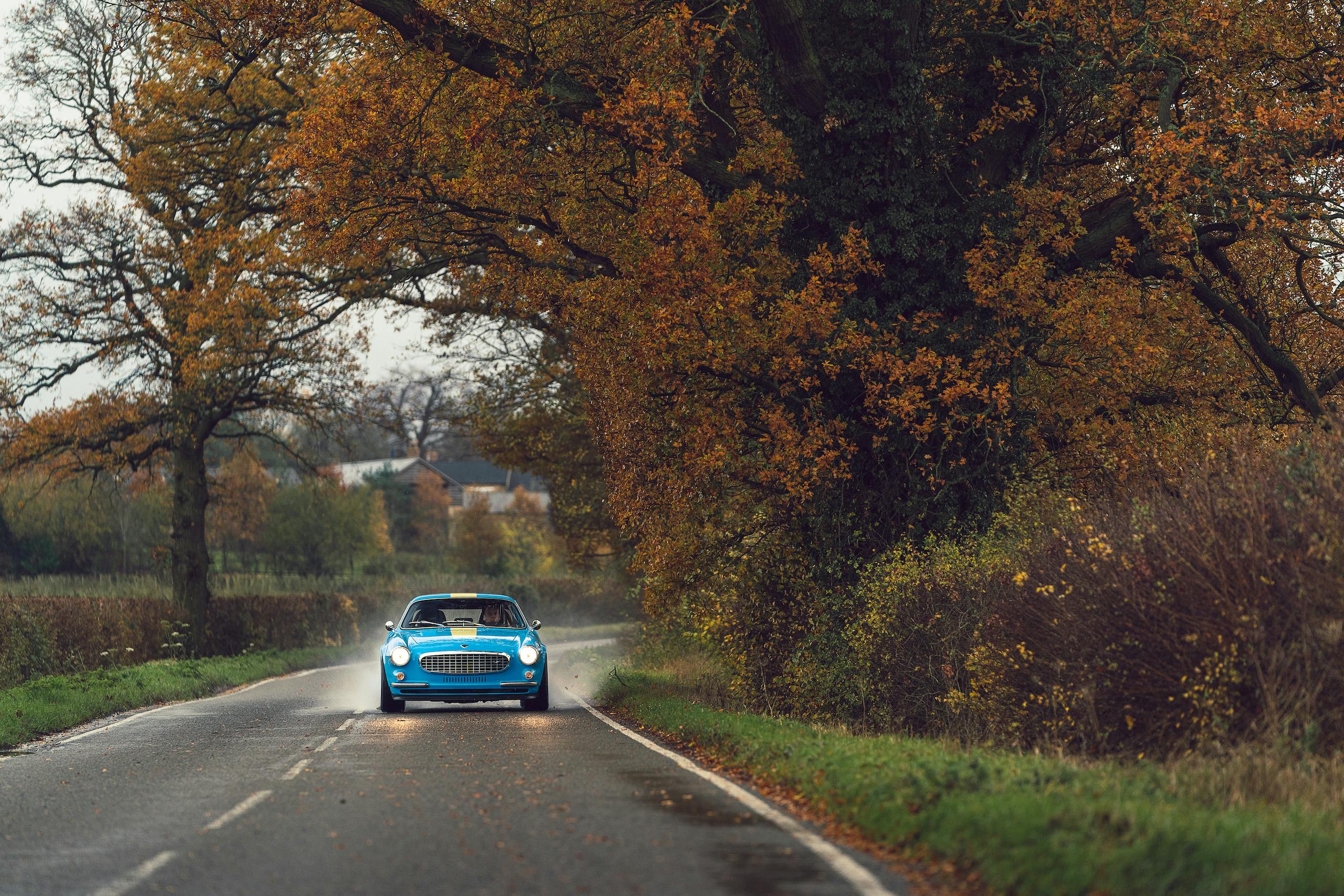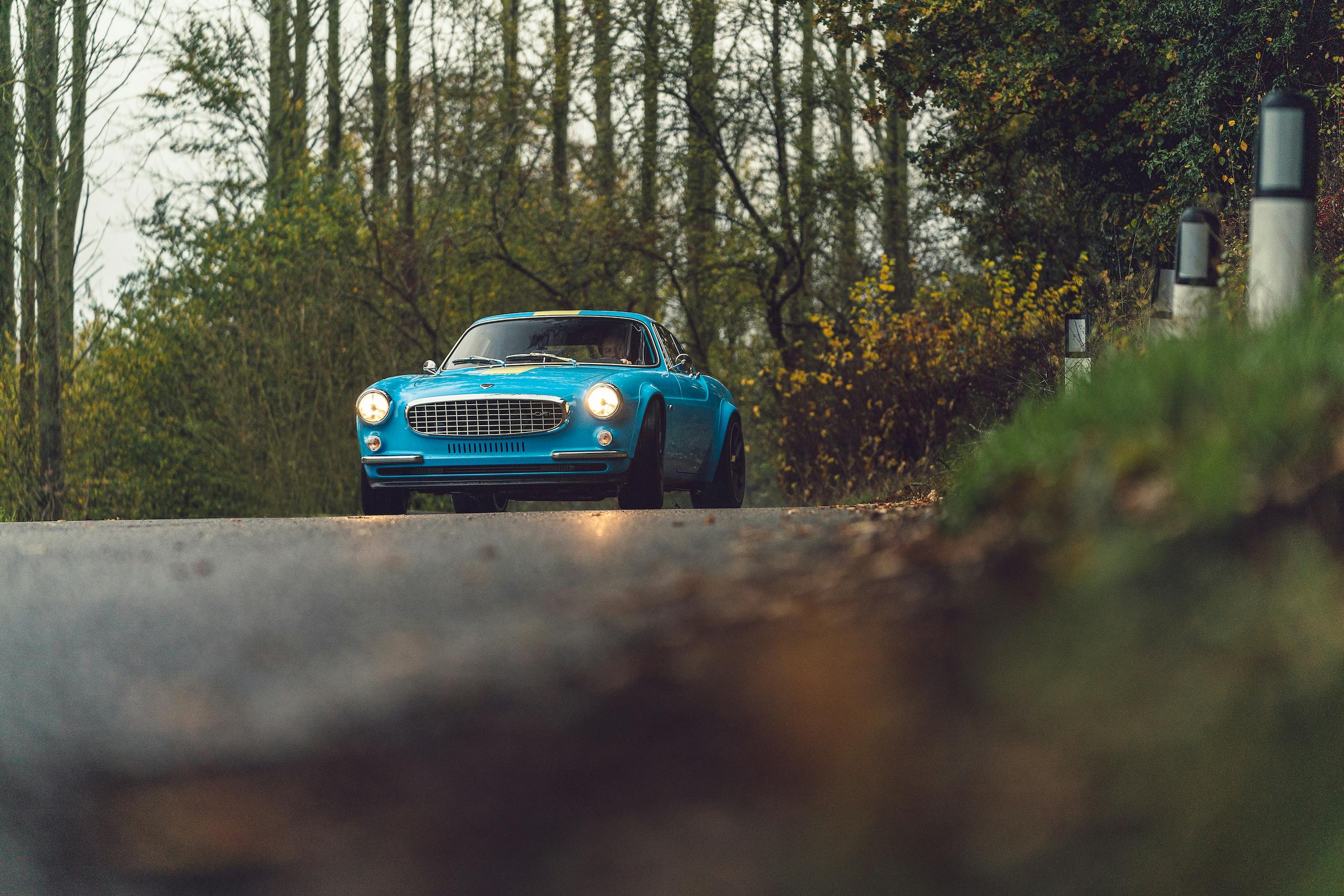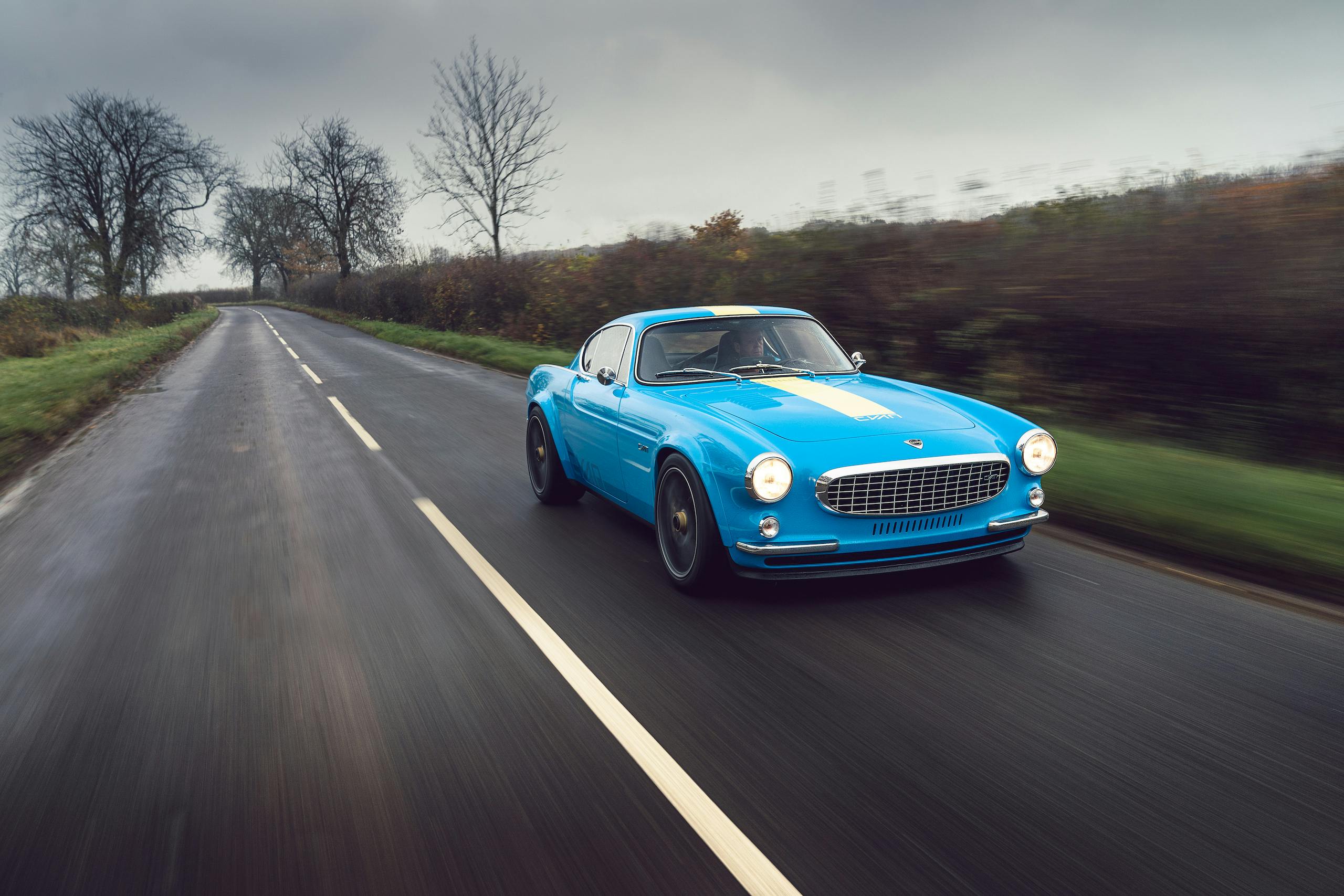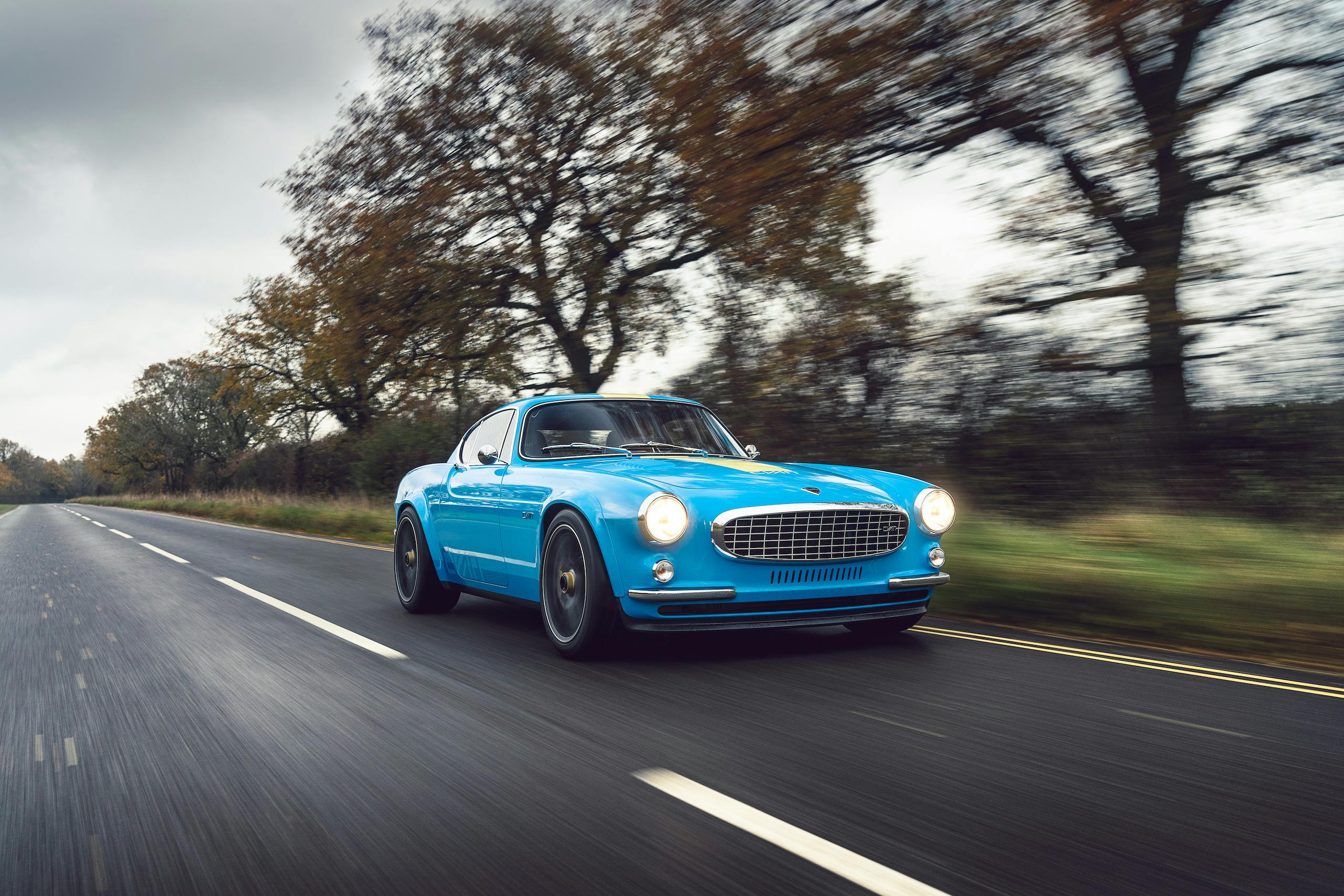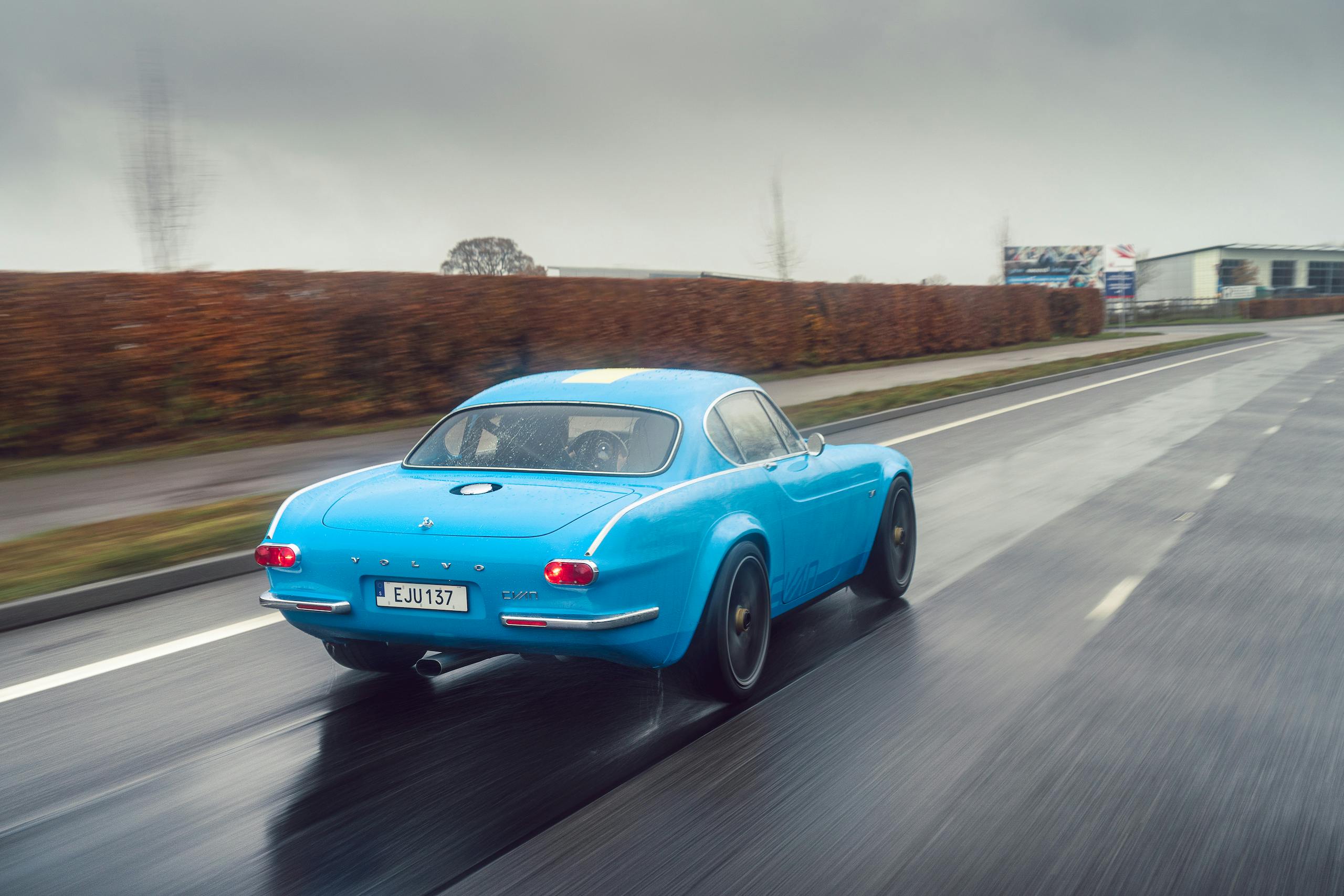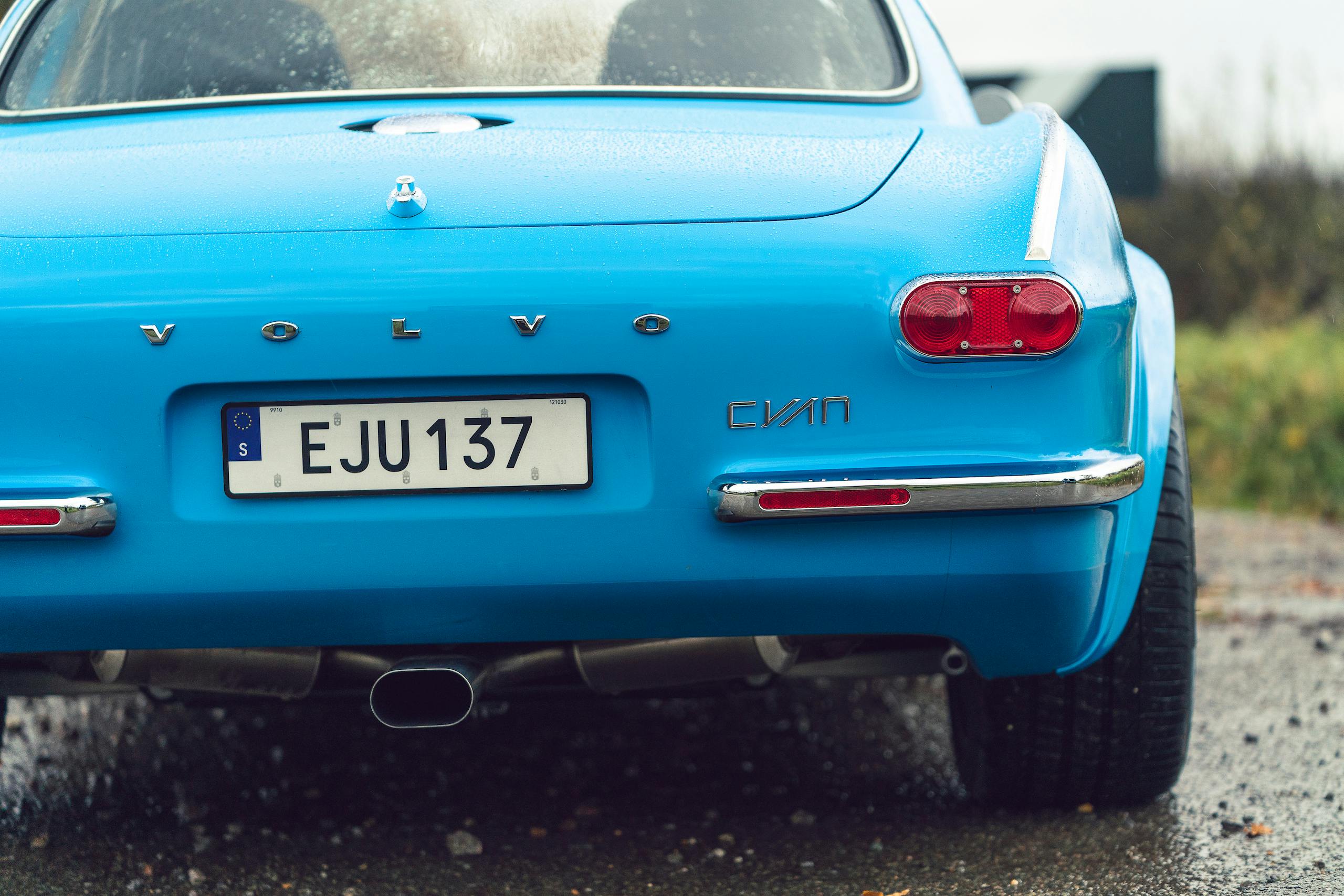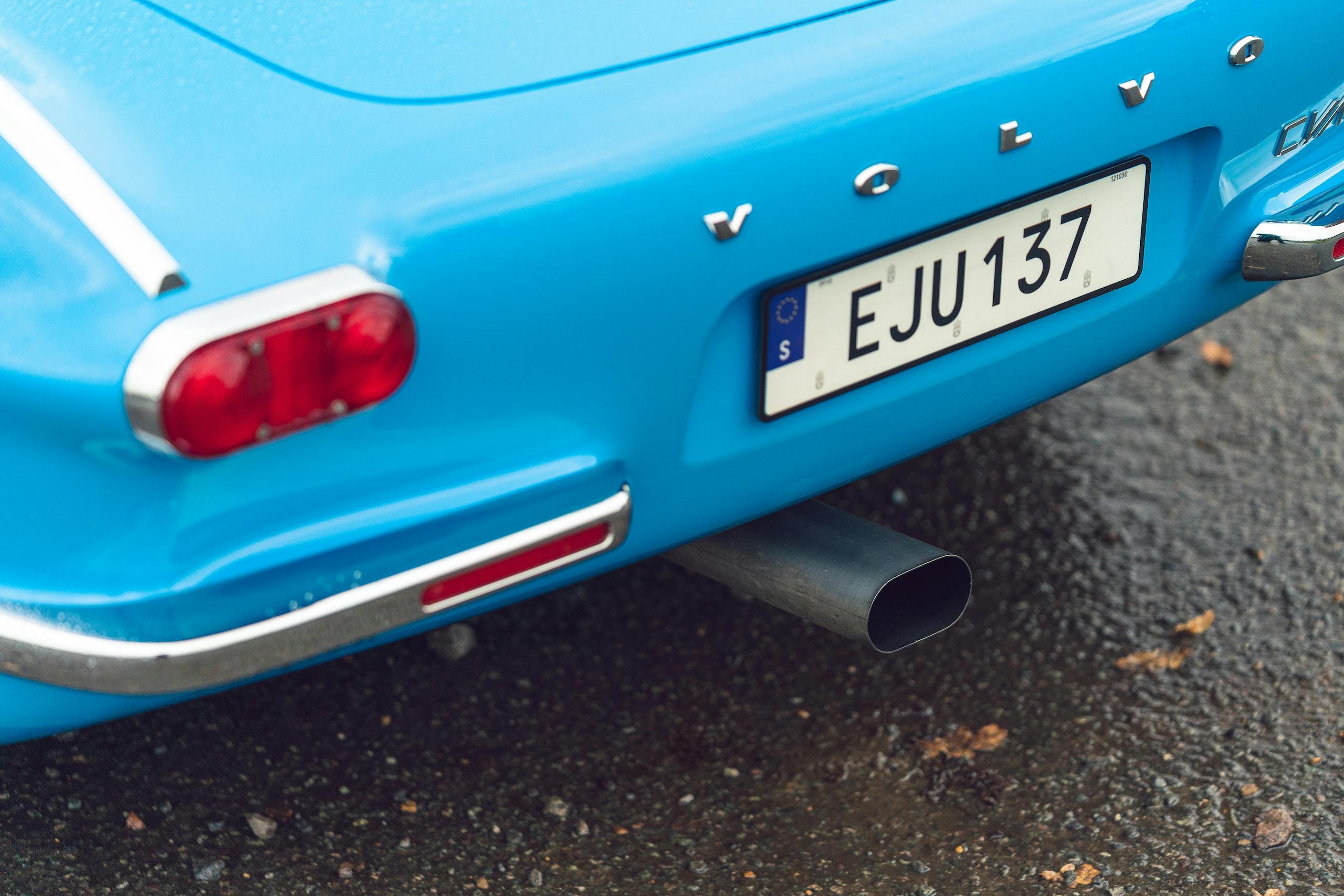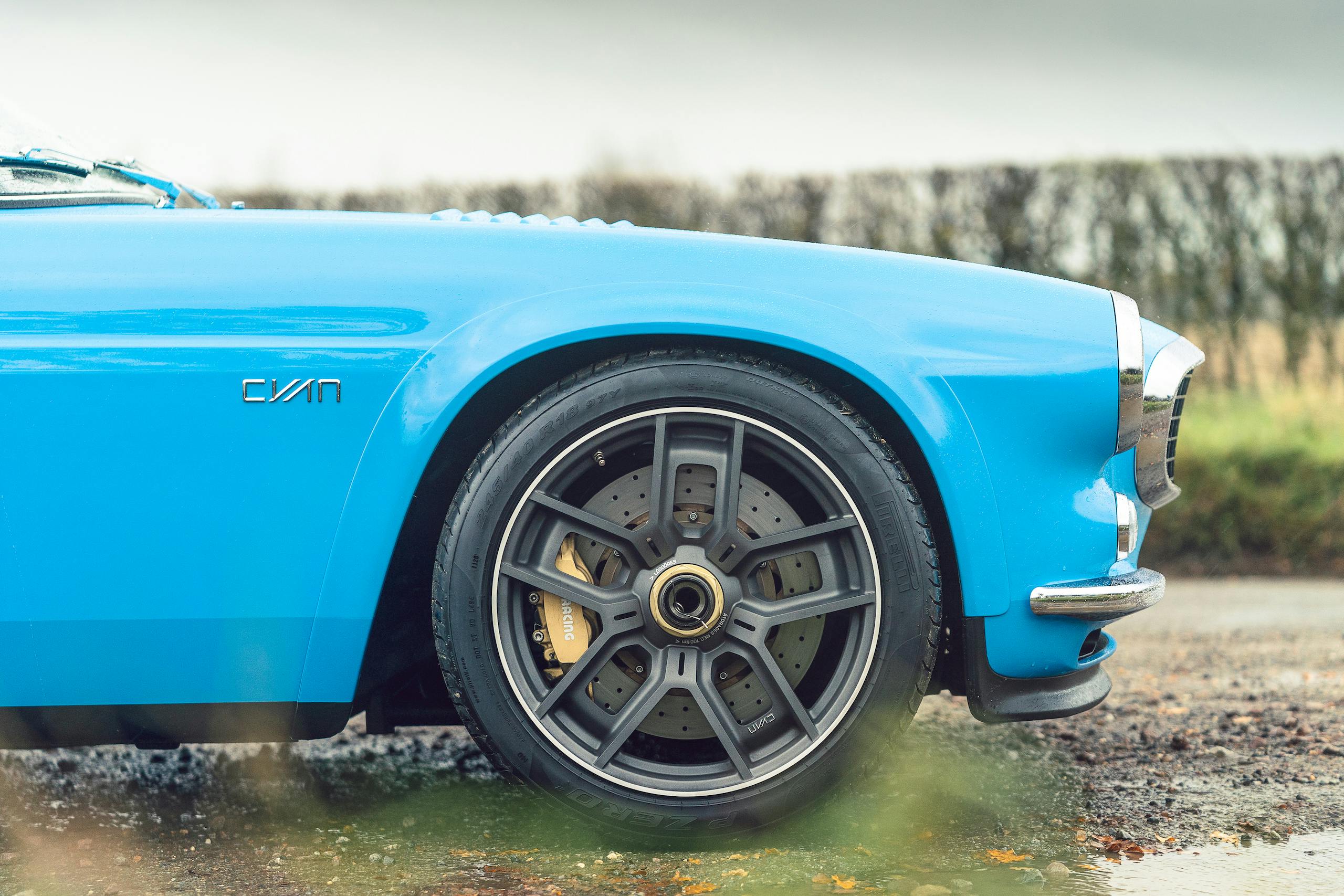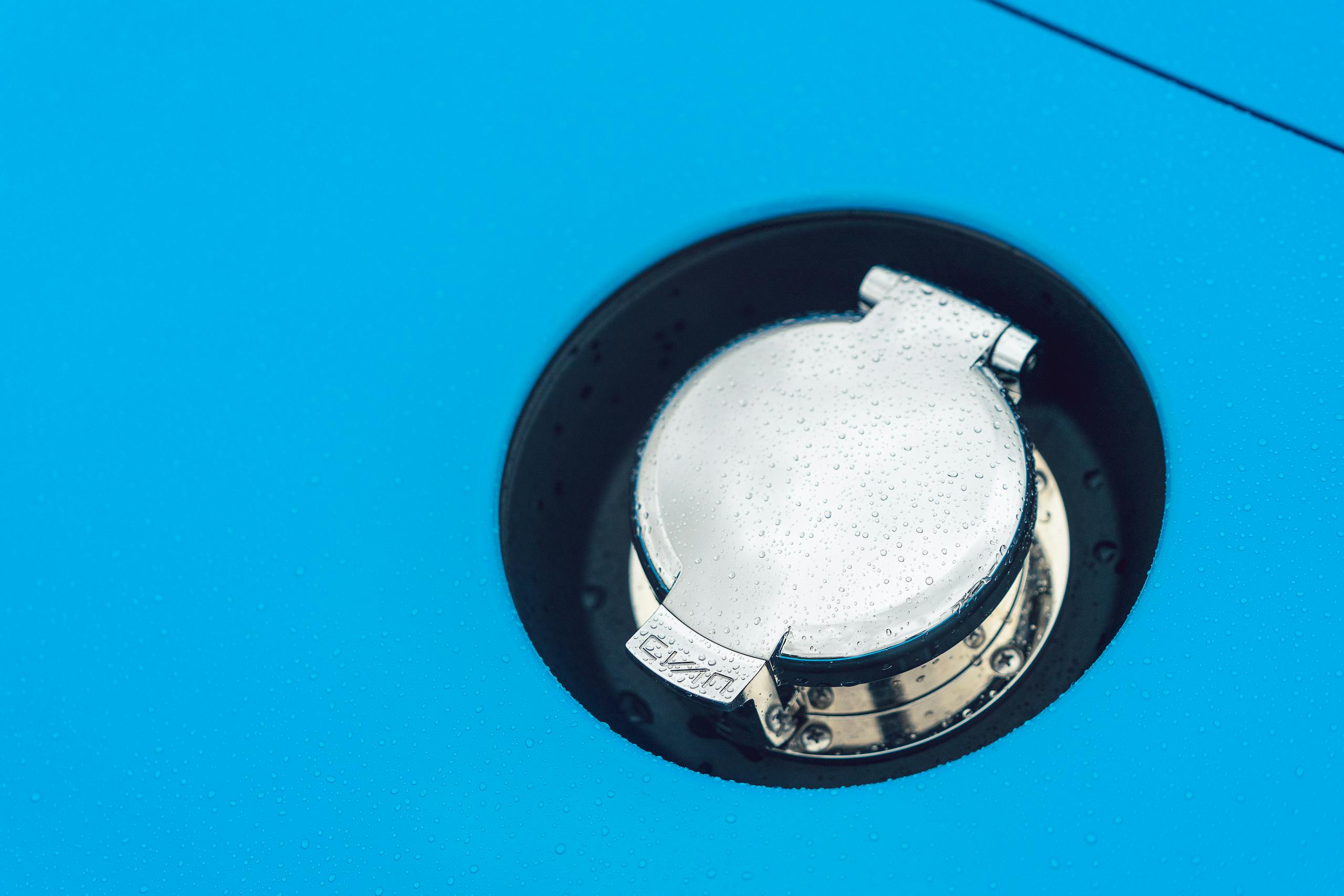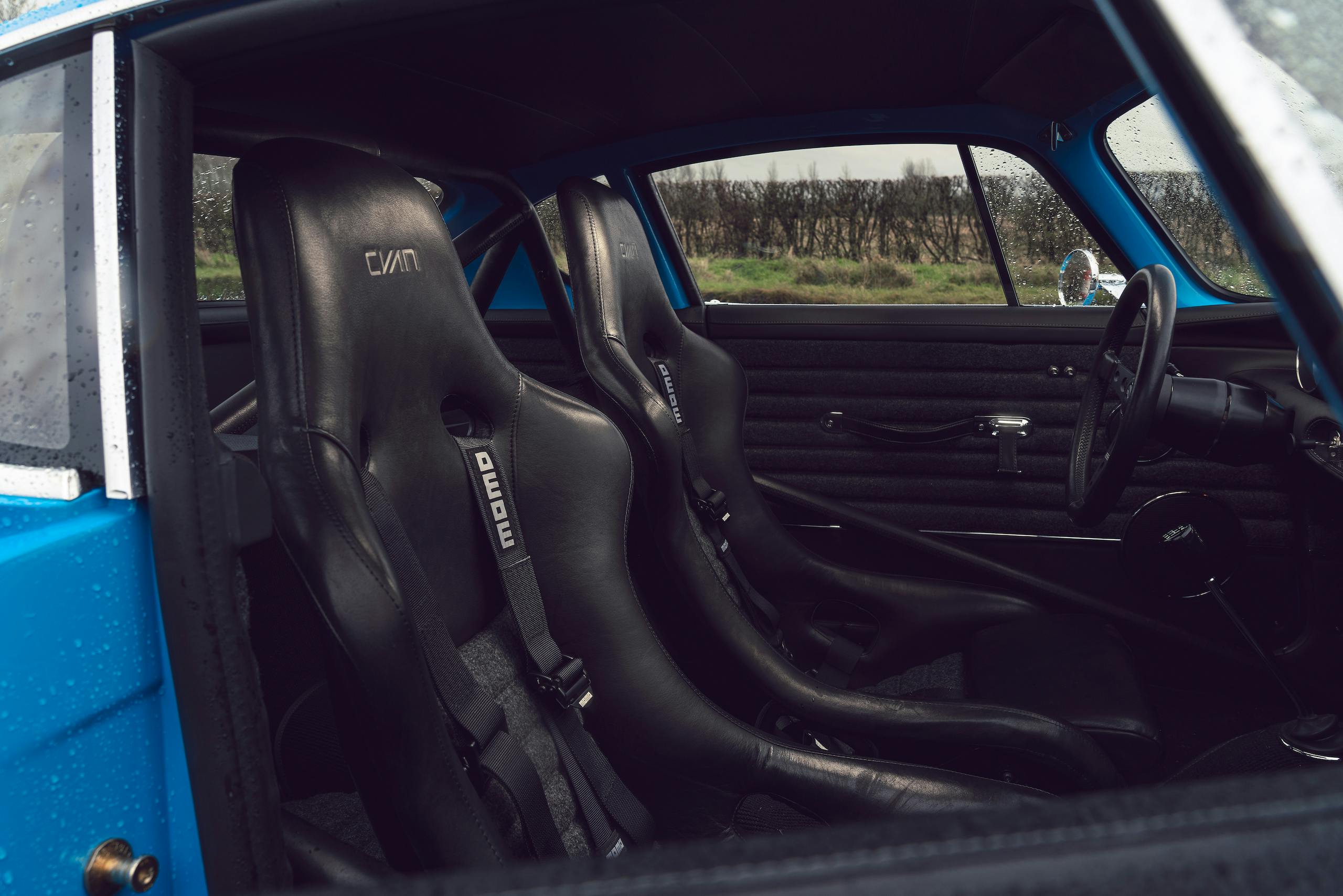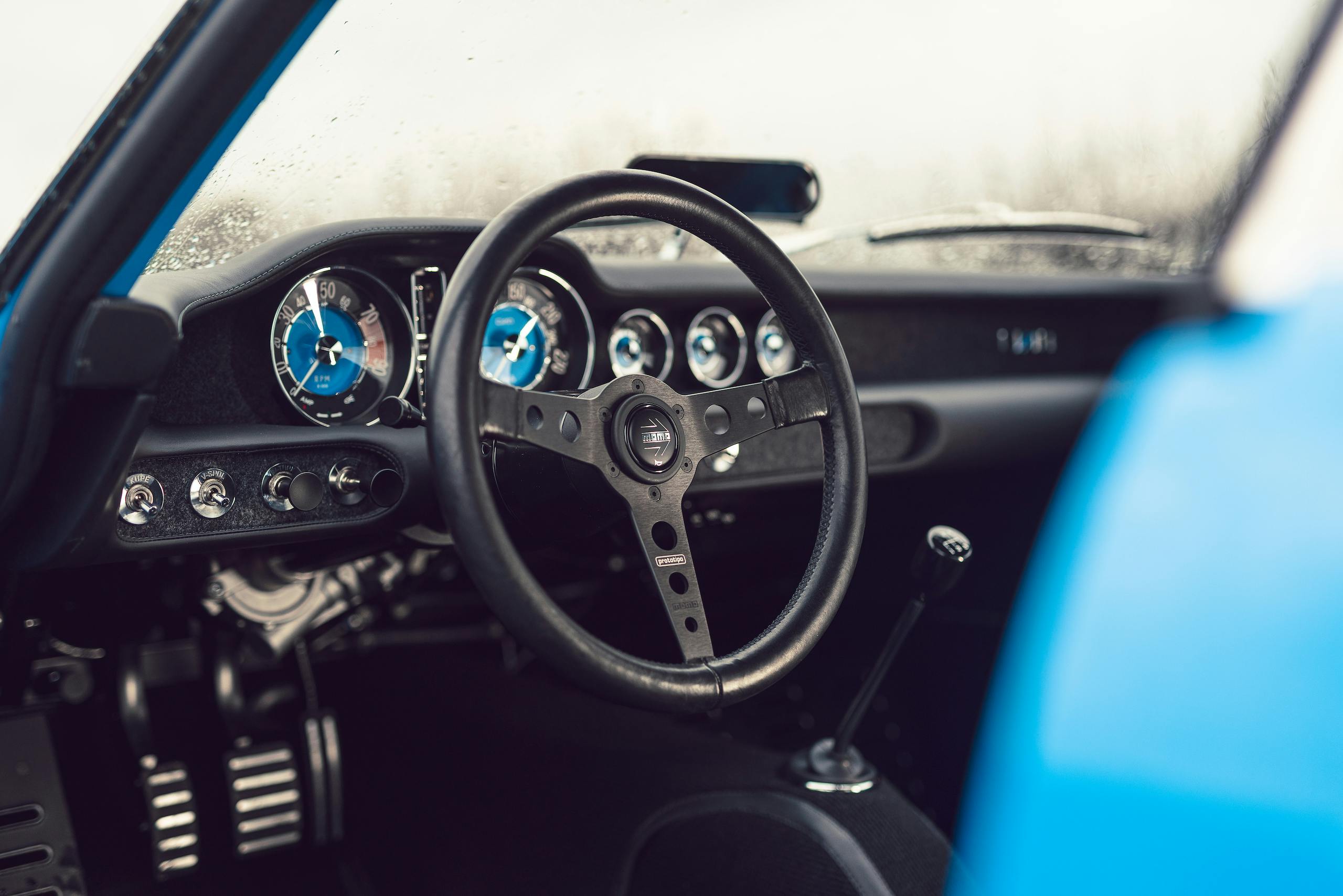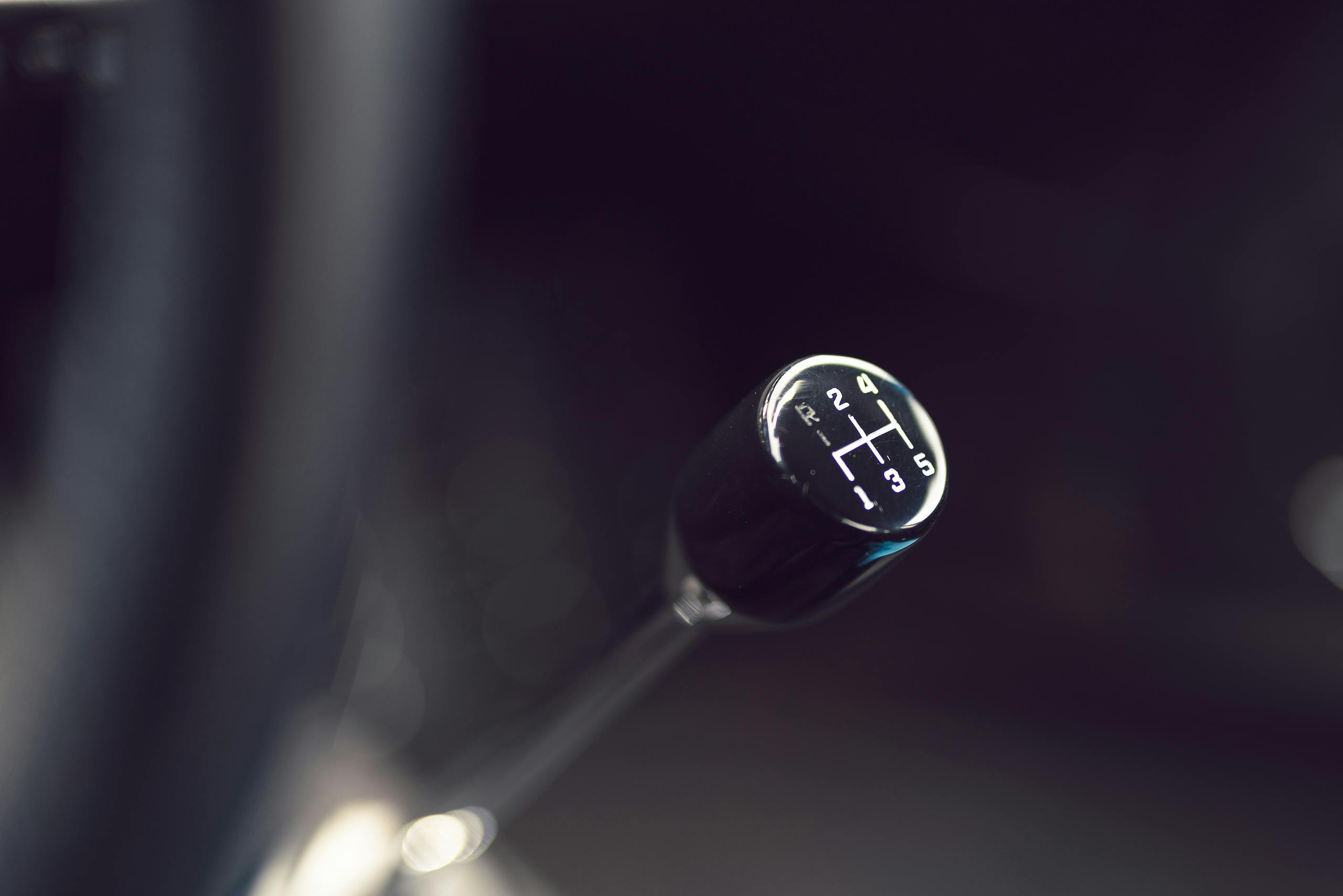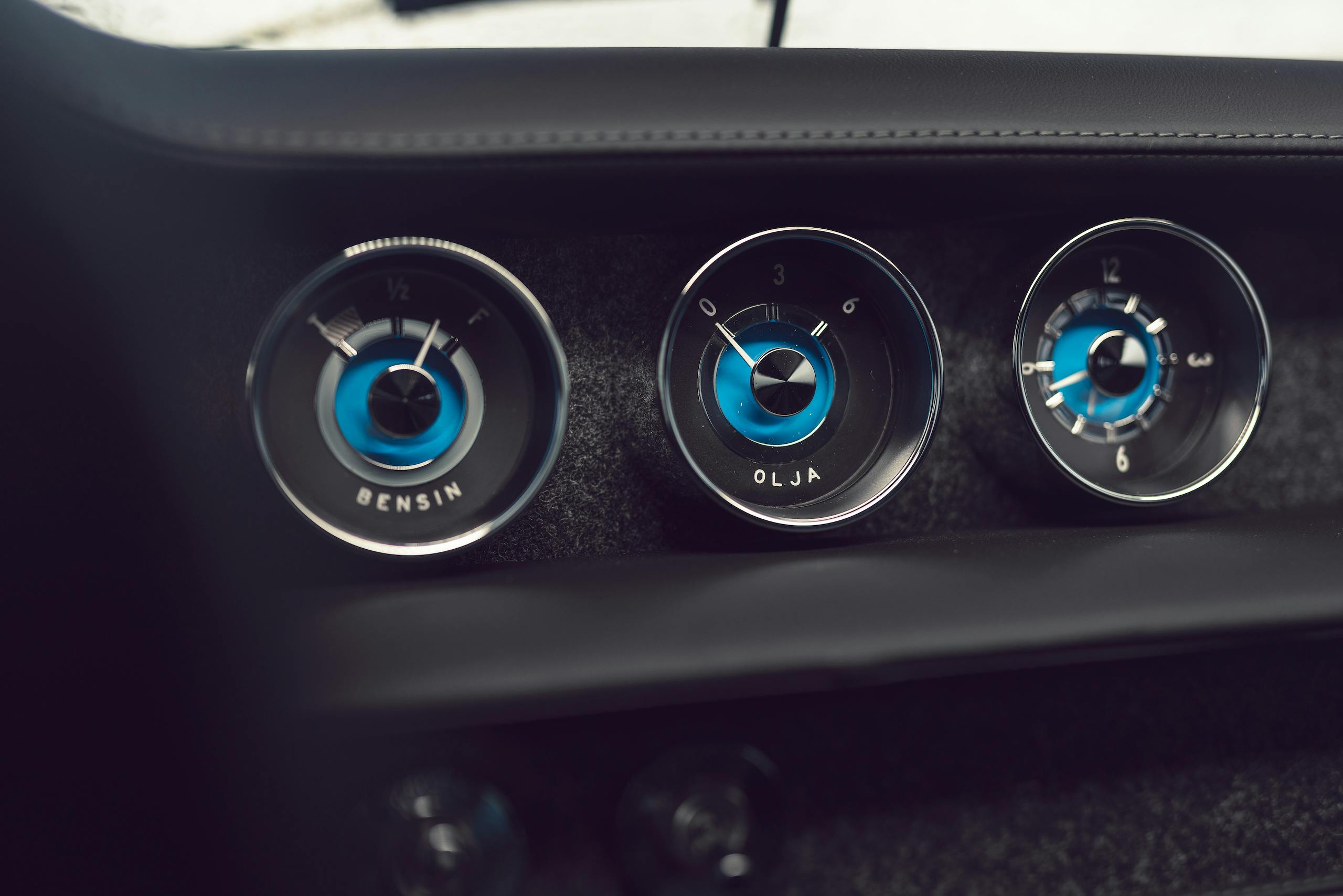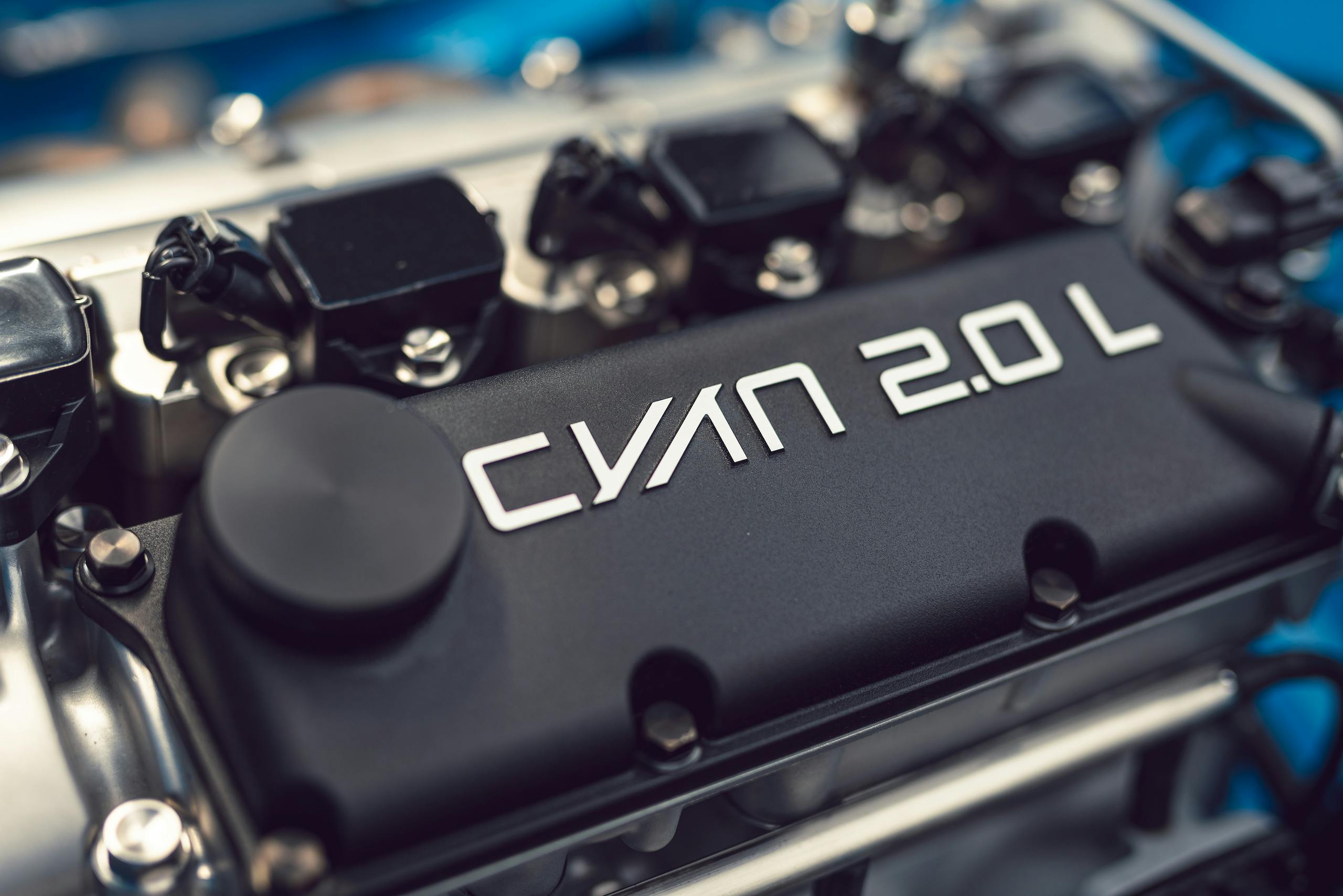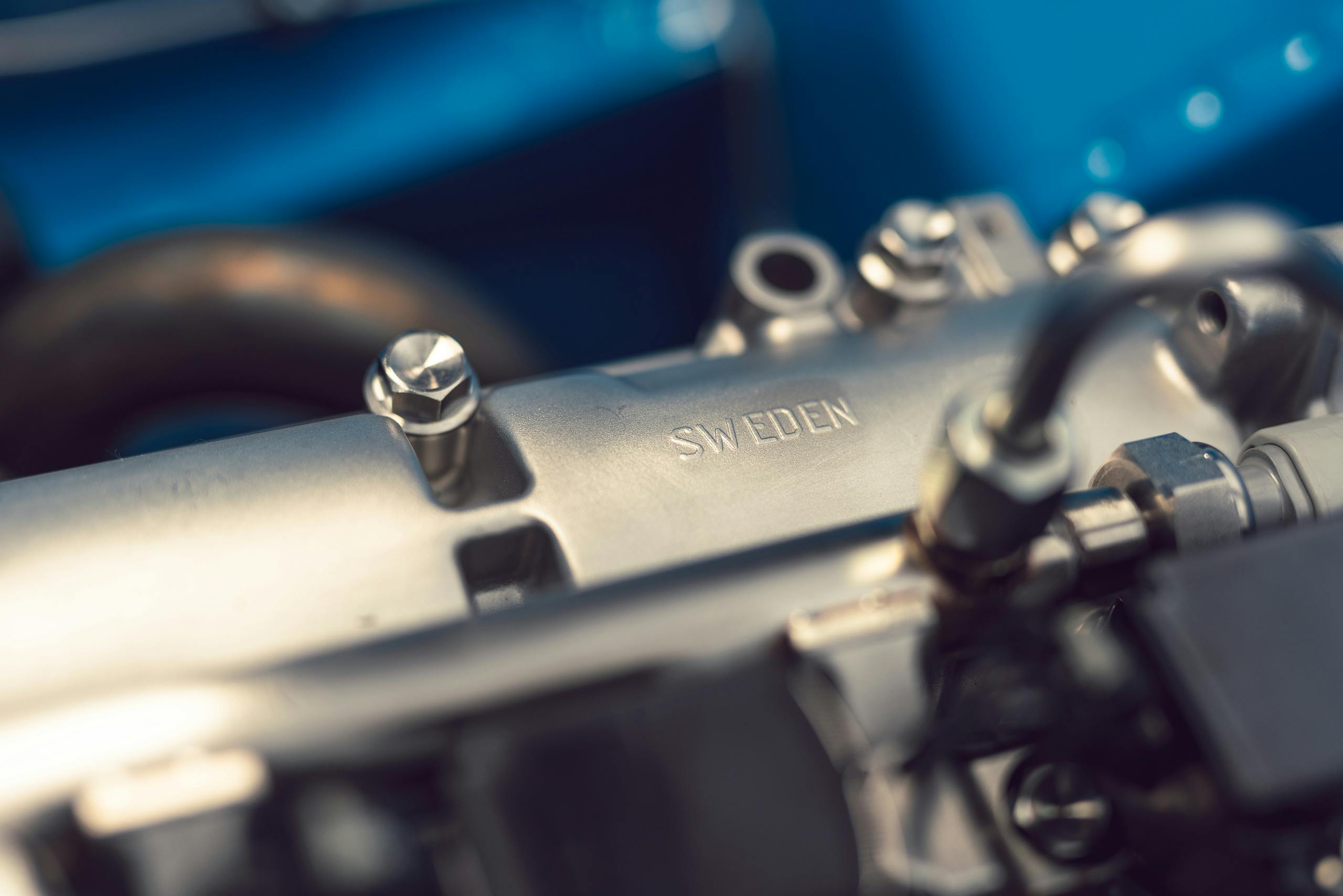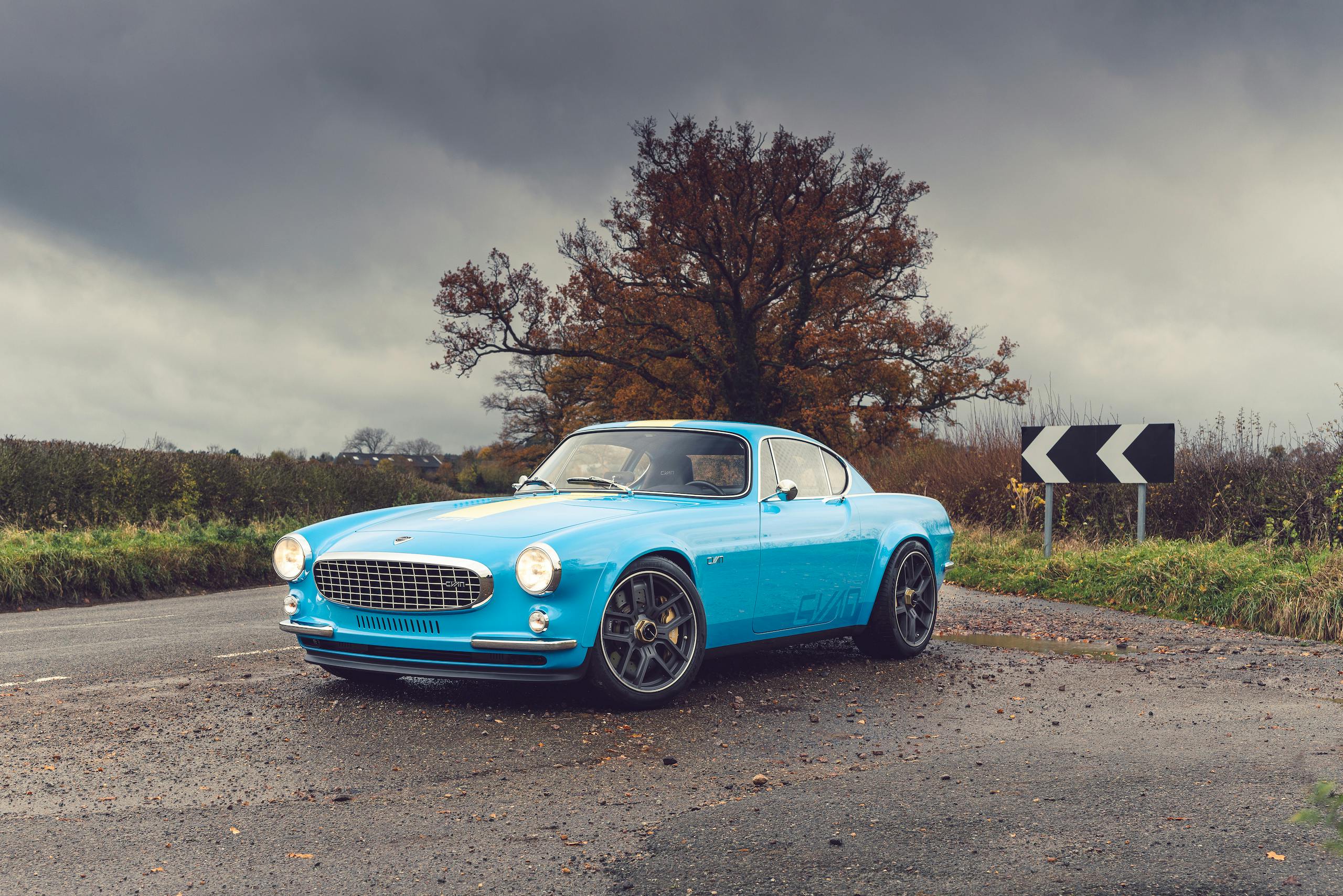Review: Volvo P1800 Cyan
Restomods, recreations, reimaginations. Whatever term you prefer, new cars that are inspired by, or built directly from, cars from the past have become increasingly popular, giving many of us rich daydream material. You’d best set aside more minutes of your working day (come on, admit it) to fantasize about this Volvo P1800. Developed by Cyan, a World Touring Car Championship–winning racing team, this totally overhauled, classic coupe demonstrates a quality of thinking and level of detail that, well, bear the hallmarks of a world-class motor racing team.
Somewhere beneath this gorgeous machine is a 1964 Volvo 1800S. What remains intact? Not much. Just the steel in the door pillars and the hood release are carried over. Nearly everything else has been replaced and re-engineered with parts far superior to the original’s Volvo Amazon–derived mechanicals and steel. Even the body and dashboard are new.
Sacrilegious to some, perhaps, but it’s also why this reimagined P1800 is so sensational to drive. Almost 40,000 of the original coupes were produced, and Cyan is happy with even the most tired starting point, such as a cheap, basket-case P1800.
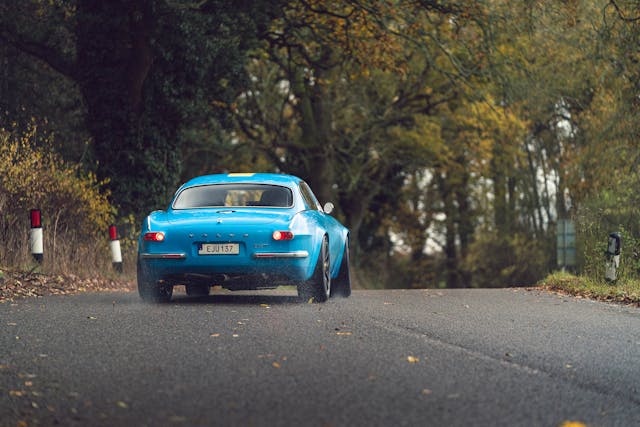
However, just because the donor car could be worn-out and affordable doesn’t mean the P1800 Cyan will be. At a very strong $500,000 (£370,000), this Volvo swims in Porsche 911 2.7 RS–infested waters and requires 12 to 15 months to complete. To date, Cyan says it has taken two orders, and that’s before anyone like me has had a chance to tell the world whether the car is any good to drive.
The Cyan Volvo gets a new, mostly carbon fiber, body shell; double wishbones all round (replacing the live axle at the rear); and a turbocharged four derived from one used in the World Touring Car series in place of the original four, which made roughly 100 hp. The new engines provides a 420-hp kick in a car that weighs only 990 kg (2182 pounds). There’s no stability control or ABS, because Cyan would rather help you drift down lanes than offer driver-assistance systems to prevent you from drifting out of them.
So far, so obvious. A racing team’s interpretation of a Volvo 1800 was always going to be exciting and analog. More surprising is that this is no stripped-out bone-shaker. The doors open and clack shut with an unexpectedly substantial feel given the feathery curb weight, fit and finish are superb, and, despite a resolutely racy flavor, the interior embraces a classic GT feel. The leather bucket seats are deeply padded and long-distance comfortable, the titanium roll cage is wrapped in leather, and the lovely wool-like textiles and chunky carpets epitomize Scandinavian cool.
Even the engine has noise suppression to damp the vibration and harshness that are normally synonymous with bolting a race engine straight into a road car. And, what’s this? There’s a delicacy to the clutch, manual gear shift, and steering at low speeds that means popping out to buy some milk could be a literal endeavor, not just a euphemistic excuse for a hedonistic drive.
The real magic is how Cyan makes such potentially thuggish performance and an extrovert chassis so exploitable and enjoyable on the road. You feel it in the finessed ride to the way power builds like a pot of boiling water and how its tires progressively relinquish their hold on even cold, sodden U.K. asphalt.
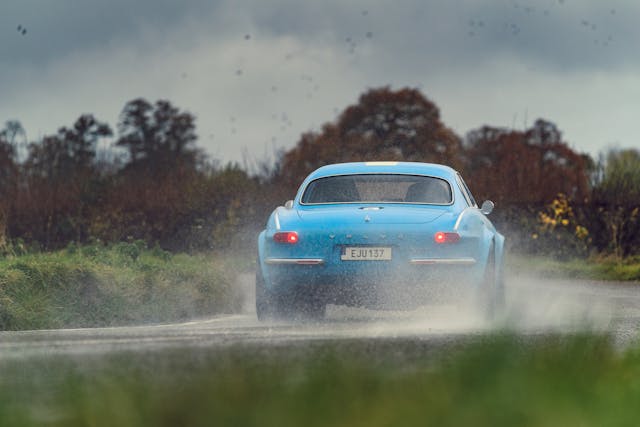
Cyan’s history with both race and high-performance road cars is key to the success of this project. The Swedish company started racing TWR Volvos in the 1990s in the domestic touring car championship, progressed to racing Volvos in the World Touring Car championship. Along the way, the firm rebranded as Polestar and developed performance road cars officially sold by Volvo, where considerations like safety and refinement were increasingly important.
Volvo bought Polestar in 2015 and the team reverted to its original name: Cyan Racing. (Polestar is now Volvo’s premium electric brand.) When WTCC rules changed to the lower-maintenance TCR regulations, the quadruple champions found themselves with less to do and began wondering how they might conceive a Volvo classic in the vein of Porsches reimagined by Singer, but with a WTCC twist. The P1800 seemed like an obvious starting point, even though Cyan had never raced one.
‘[It gave] us inspiration to create what could have been if we as a race team had been there during the [Sixties], racing the P1800, and got to design a road version of our race car,’ explains Christian Dahl, Cyan Racing boss.
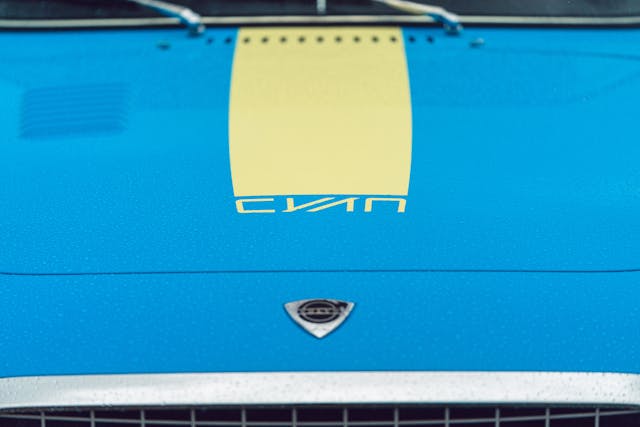
Dahl makes it sound simple, yet it was anything but. Hans Baath, Cyan Racing’s general manager of cars, recalls Cyan engineers testing the torsional rigidity of an original P1800 and discovering it didn’t have any. It’s why there’s new structural bracing along the sills and underbody triangulation. The carbon-fiber body is also bonded to the steel to boost structural integrity.
All metalwork is new beyond the front and rear bulkheads and accommodates the new double wishbones all-round, so rather than being constrained by existing pick-up points, the suspension was instead relocated. Hence the front and rear 18-inch forged alloys are further forward, pushed out on a wider track, with the suspension infinitely adjustable: compression, rebound, caster, camber, toe and, at the front axle, for bump steer, too.
It’s all packaged in a body that Ola Granlund, Cyan Racing’s designer, reinterpreted from the original Ghia design by Swede Pelle Petterson. Most notable is the shorter rear end with less upright fins, but all the glass is new because the glasshouse is subtly different. Some 15 cm (5.9 in) shorter, 5 cm (1.96 in) wider, and 8 cm (3.2 in) lower, the updated car is like a P1800 morphing in the direction of a Jaguar XJC—sleeker, more planted, more sporting, and, above all, achingly beautiful.
The Volvo 2.0-liter turbo four is basically—if not literally—lifted from Cyan’s 2017 WTCC-winning Volvo S60, which raced at 1.6 liters. The installation is so neat it appears naturally aspirated before you spy the turbo tucked low down, and it’s connected to a five-speed Hollinger gearbox, a carbon-fiber prop-shaft, and a Wavetrac torque-biasing rear differential.

There’s a certain gruffness along with the whooshes and sucks you’d expect of a turbo engine running 2.7 bar, but there’s character and excitement, too. The engine is expertly remapped to be useable on the road. Peak power doesn’t arrive until 7000 rpm (the rev limit is way up at 7700 rpm), but, more important, the surprisingly modest 335 lb-ft of torque doesn’t arrive until 6000 rpm. Drivers have come to expect more oomph at much lower revs from a turbo, so you know from the numbers this will be different.
The nuanced delivery is immediately reassuring on the wet roads near Cyan’s temporary base at Silverstone, the U.K. circuit. While there’s still sufficient torque to be perky at low revs, power builds progressively rather than hitting the rear tires like a wave pounding the shore, and the throttle response is ultra-precise. The Borg Warner turbocharger, which has ceramic ball bearings, spools up with barely any inertia at all. Your right foot is absolutely calling the shots.

First gear is down and left on a dog-leg like on a BMW E30-chassis M3, and it’s quite a long (if very likable) throw, but it slots with a clean little click, and the ratio’s quite tall. The result is a bit like mechanical traction control, because you can really ease on to the pedal and feel the power rising gradually. When the rear tires finally do slip (Pirelli P Zeros in a Mercedes-spec compound), the rear steps out so progressively that you just bang the lever forward for second and use all the power again, confident that if the rear tires continue to slip then, well, you’ll deal with it.
When you really trust what’s beneath you and use all the performance, there’s a screaming rush past 7000 rpm that fizzes with energy and feels quite unlike any other turbo four I’ve driven.

The chassis is developed to be similarly progressive to the power. It tracks straight and true and soaks up bumps no matter how tricky or cambered the surface or how much standing water is on the road, and makes the car feel approachable, from its body control to the measured rate of steering response to how it feels so laser-guided and unflappable. Four-piston AP brakes provide a firm pedal and crushing stopping power that somehow still struggles to lock the front wheels in foul conditions. That said, an ABS comfort blanket might be nice.
Our test car was not quite the finished specification, as the electric steering is a default calibration from the aftermarket supplier and Cyan preferred not to send us out with the one it’s experimenting with. The truth is the steering’s very good, nice and precise and with a lightness that helps make it wieldy without feeling vague and disconnected, but it doesn’t self-center. This didn’t materially spoil a road drive, but I wondered if it might if you were chucking it around on a circuit—or, better, on a frozen lake with studded tires—and more aggressively exploiting its flamboyant handling. Hopefully the final calibration addresses that.

Even as things stand, there’s a fusion of excitement and predictability in this specification that breeds real confidence, to the extent that edging past the limit is a lesson in how to dial both communication and sublime balance into a chassis; it’s just so deliciously throttle-steerable. In fact, it’s when this car starts to slide that you truly appreciate just how beautifully set up and thought out this entire vehicle is. Turns out it was all overseen by no less a hand than Thed Bjork, the man who drove Cyan’s 2017-winning Volvo S60 WTCC car.
The P1800 always was an unusual Volvo, but this one is borderline contradictory: it prioritizes performance, appeals to your heart over the head, and probably costs more than a nice Scandinavian farmstead.
It won’t make sense to a lot of people, not least traditional Volvo buyers, but Cyan Racing’s twist on the P1800 happens to be not only my favorite Volvo, but one of my favorite cars full stop.
2021 Volvo P1800 Cyan specifications
Highs: An ultra-cool iteration of Volvo’s coolest sports car, unique style, expertly tuned dynamics that can be enjoyed on the road.
Lows: Niche of a niche, 500 grand is serious coin for any 1800.
Summary: An absurdly over-engineered and meticulously restored Swedish sports car for the thinking enthusiast.


